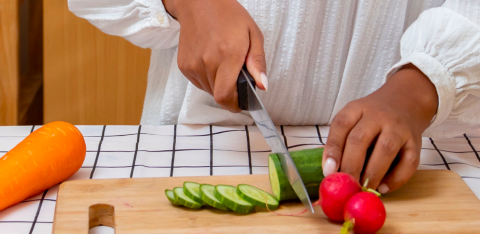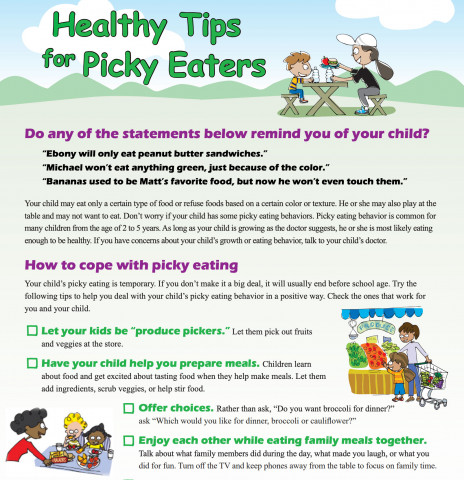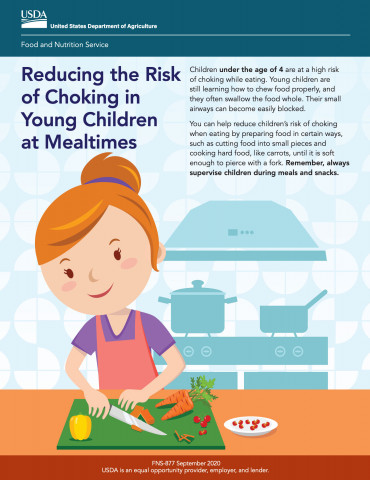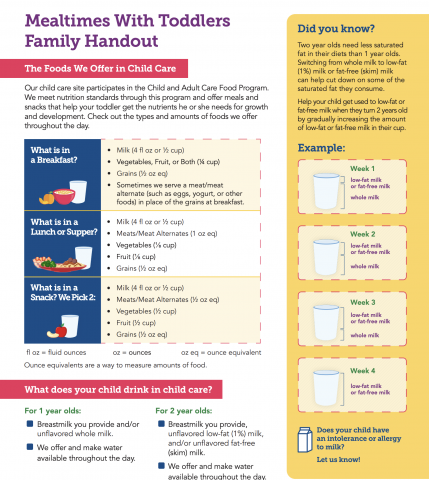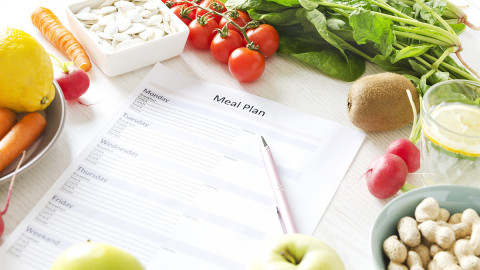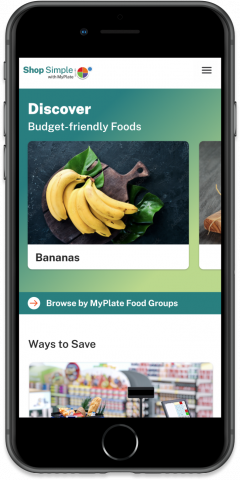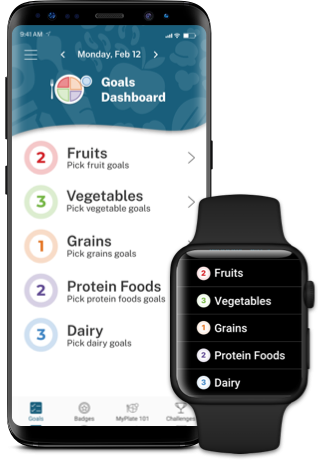Toddlers
Give your toddler healthy choices as they explore new foods and flavors.
Toddlers are learning to feed themselves and to eat new foods during this important time of growth and development. Young children have small stomachs and are learning what foods they like and dislike. So, make every bite count!

Picky Eating
Some “picky eating” behaviors are normal for toddlers as they explore new foods and learn to talk about their needs and likes. Try these tips to help them during this time:
- Your child may not want to try new foods. Try serving a new food in the same meal with food they like and eat. It may take a child up to 8 to 10 tries to accept a new food.
- Your child may not eat the exact amounts suggested every day. Try to balance the amounts over a few days or a week.
- Offer foods from all five food groups each day. Help your child choose from many types of foods.
- Serve foods in small portions at meal and snack times.
- Toddlers can fill up on drinks. Offer water if your child is thirsty in between meals.
- Let your child help make meals. Even young children can rinse fruits and vegetables, tear lettuce, or stir ingredients. Children get excited about tasting foods when they have been involved in the prep.
MyPlate Tips on Alexa
Get MyPlate nutrition information straight to your home on your Amazon Alexa smart speaker, or on your phone or tablet via the free Amazon Alexa app. For more information, visit our MyPlate Alexa page.
Below are some of the many tips available for parents and caregivers on what and how to feed your toddler. And just like the MyPlate.gov website and the Start Simple with MyPlate app, all of the information provided by MyPlate on Alexa is based on the Dietary Guidelines for Americans, 2020-2025.
Resources
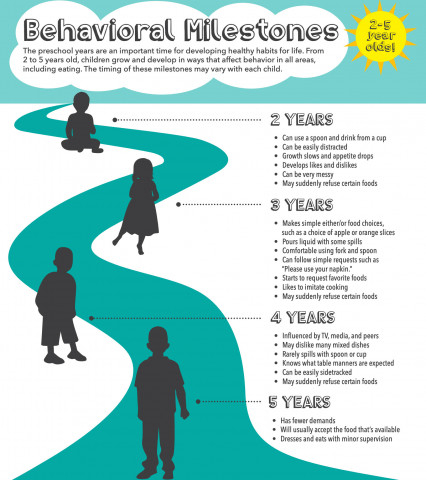
Behavioral Milestones
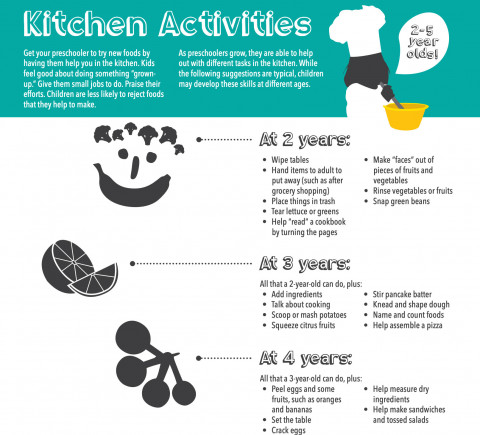
Kitchen Helper Activities
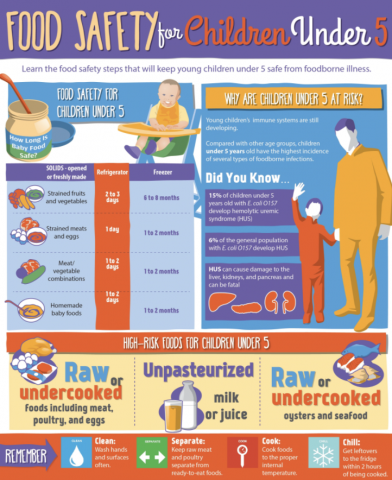
Food Safety for Children Under 5
